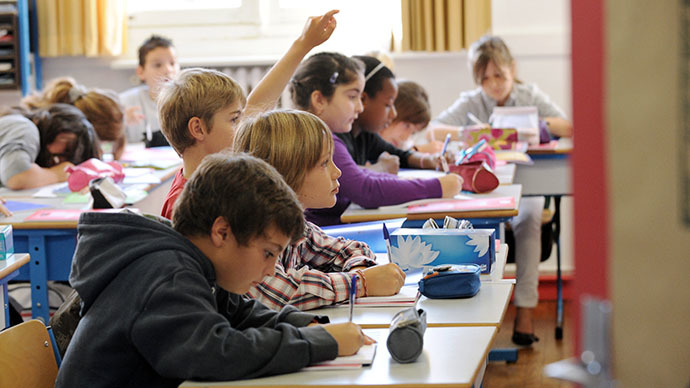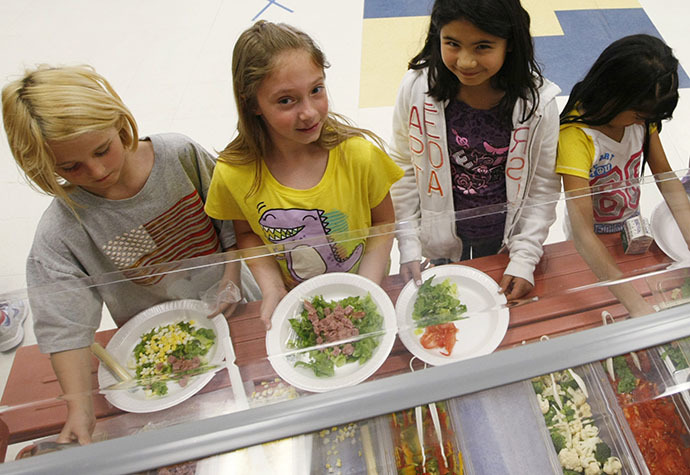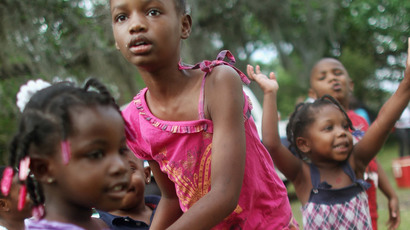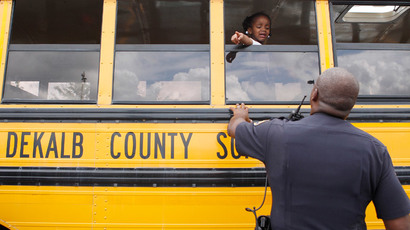First time in history: US schools will not have white majority this autumn

This autumn, the majority of students in public schools across the United States will be non-white for the first time in American history.
The new data comes courtesy of the National Center for Education Statistics (NCES), which estimates that 49.8 percent of all American students this coming school year will be non-Hispanic white students. At just under 50 percent, white students will still be the biggest racial group represented in US schools, but they will no longer make up the majority of all students in the country.
According to the Associated Press, the NCES projects that nearly 25 percent of minority students will be Hispanic, while 15 percent will be black and another five percent Asian. Biracial and Native American students will make up the rest of the minority stake in schools.
The news comes as the US population in general continues to undergo significant racial and ethnic changes. The US Census Bureau projects that minorities will make up a greater share of the US citizenry than whites by 2043, partially thanks to the fact that birth rates are going down or staying the same for whites – as well as for African Americans and Asians – while climbing higher for Hispanics.
These trends will spur changes in numerous areas, including the American educational system. As noted by AP, some school districts are already making changes and confronting new racial issues as a result. During a May incident in Chicago, police were called to stop a fight between black and Hispanic students, while some families are deciding to either embrace or turn away from schools featuring more diverse groups of students.

The development also poses more practical challenges, such as ensuring that students who speak different languages at home receive good and effective English lessons during and after school. In some cases, translators have even been hired for parent-teacher conferences, and a more concerted effort has been made to hire teachers from various backgrounds and improve relationships between instructors and those whose native languages are not English.
“It is an ongoing challenge to try and make our teacher population reflect our student population,” said Steve Saunders, spokesman for the Adams County, Colorado, school district outside Denver which has seen a large shift toward having Hispanic students.
“I think one thing that's critical is that schools and [Parent Teacher Associations] and everyone just need to understand that with changing demographics, you can't do things the way you've done them before,” Ohio Parent Teacher Association President Lisa Mack told AP. “That you have to be creative in reaching out and making them feel welcomed and valued and supported in the school system.”
More diverse schools will also highlight another problem in the US, since an earlier report found that segregated institutions are making something of a comeback. As RT reported back in May, only 23 percent of African American students attend schools that are majority white – the lowest percentage since 1968. More than 50 percent of Latino students attend majority Latino schools. According to researchers at the Civil Rights Project at UCLA, many of the gains made during integration have been reversed.
That report followed one by the Annie E. Case Foundation, which stated that black, Native American, and Hispanic children still face the most barriers to success. Currently, about 25 percent of Hispanic and African American families live under the poverty line, with an annual income of $24,000 or less. The report found that barriers for these minority groups exist at birth and only widen afterwards.
Noting that future US schools will be composed largely of minorities, the Casey Foundation’s Laura Speer said it is integral to America’s future that these children do not fall behind.
“The kids of color in our country are absolutely critical to the future success of the United States,” she said. “They are going to be the majority of our work force and we can’t afford to lose the talent they have and could have in the future behind. We need them to be successful.”














